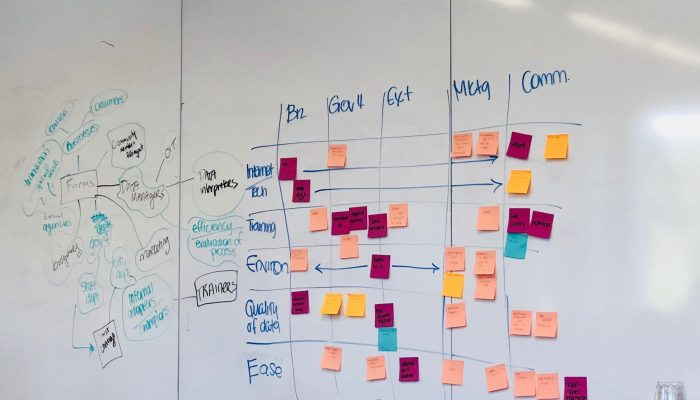Week 2: What is Design Thinking?
The fifth cohort of the Academy for Municipal Innovation kicked off in October 2017. This is a blog series written by participants about their experiences in the program. Today’s author is Lisa Parvin, Associate Project Manager for the Philadelphia Department of Human Services.
The first question asked in session two of the Academy of Municipal Innovation (AMI) was, “What is Design Thinking?” As I started to write this blog, I Googled “design thinking” and discovered this quote, “A design mindset is not problem-focused, it’s solution focused and action oriented towards creating a preferred future.” I am sure this is what you think of when you think of government. Well, maybe not. AMI is trying to change this by challenging government employees to utilize design thinking to better frame and solve government problems.
In the beginning of AMI session two, professors Dana Scott and Jack Suss talked about two ways to approach situations. Through:
- Divergent Thinking – Fostering ideas, without limitation.
- Convergent Thinking – Narrowing down ideas to become more focused.
It was not until I sat down to write this blog that I realized how much the tools we learned and utilized promote these two types of thinking.
The AMI application required students to include a problem statement about a challenge we face in the City Department in which we work. We revisited our problem statements by means of the tools AMI professors presented. Through exercises, we learned ways to broaden our thinking and capture ideas (divergent thinking), and then condense these ideas to better frame and present our problem statements (convergent thinking). One of the takeaways for me was Professor Suss’ suggestion to not limit yourself to good ideas. Bad ideas can spark good ideas.
In addition to a problem statement, we came to AMI with pre-conceived notions about solutions to our problems. We learned that when presenting a problem, it should not contain the solution. This sounds simple but, being close to a problem, it is often difficult to keep our opinions for resolution aside. Problem statements without solutions spark ideas that may not have been generated had a solution been presented.
A large benefit of AMI is the comradery created by working together with people from other City Departments. It is interesting to see how similar many of our challenges are. It is beneficial presenting and working through our Departmental problems with perspectives from others. As I look forward to the next sessions, I can see how my AMI knowledge and skills will assist me, and others, to think innovatively for the betterment of the City in which we live and/or work.
What is the Academy for Municipal Innovation?
AMI is a seven-week program that introduces participants to the principles and practice of innovation. Participants will learn to integrate tools and techniques of innovation drawn from design thinking, system thinking, business analytics, and ethnographic research to discover innovative solutions to complex real world problems. The program will be delivered in a studio setting, anchored in Jefferson University’s (formerly Philadelphia University) signature nexus learning pedagogy of active, collaborative, and real world learning. Each session will introduce practical techniques & tools that can be immediately applied at work to inspire innovation through collaboration.
Throughout the program, the City (Innovation Management) will offer opportunities to further develop the skills and tools that participants are learning in the classroom. Brown bag lunches, innovation consulting sessions and workshops will take place throughout the fall to encourage students to engage with the material in the context of their everyday portfolios, and to provide them with a space to meet past graduates and learn about how they’ve integrated innovative thinking into their roles.

